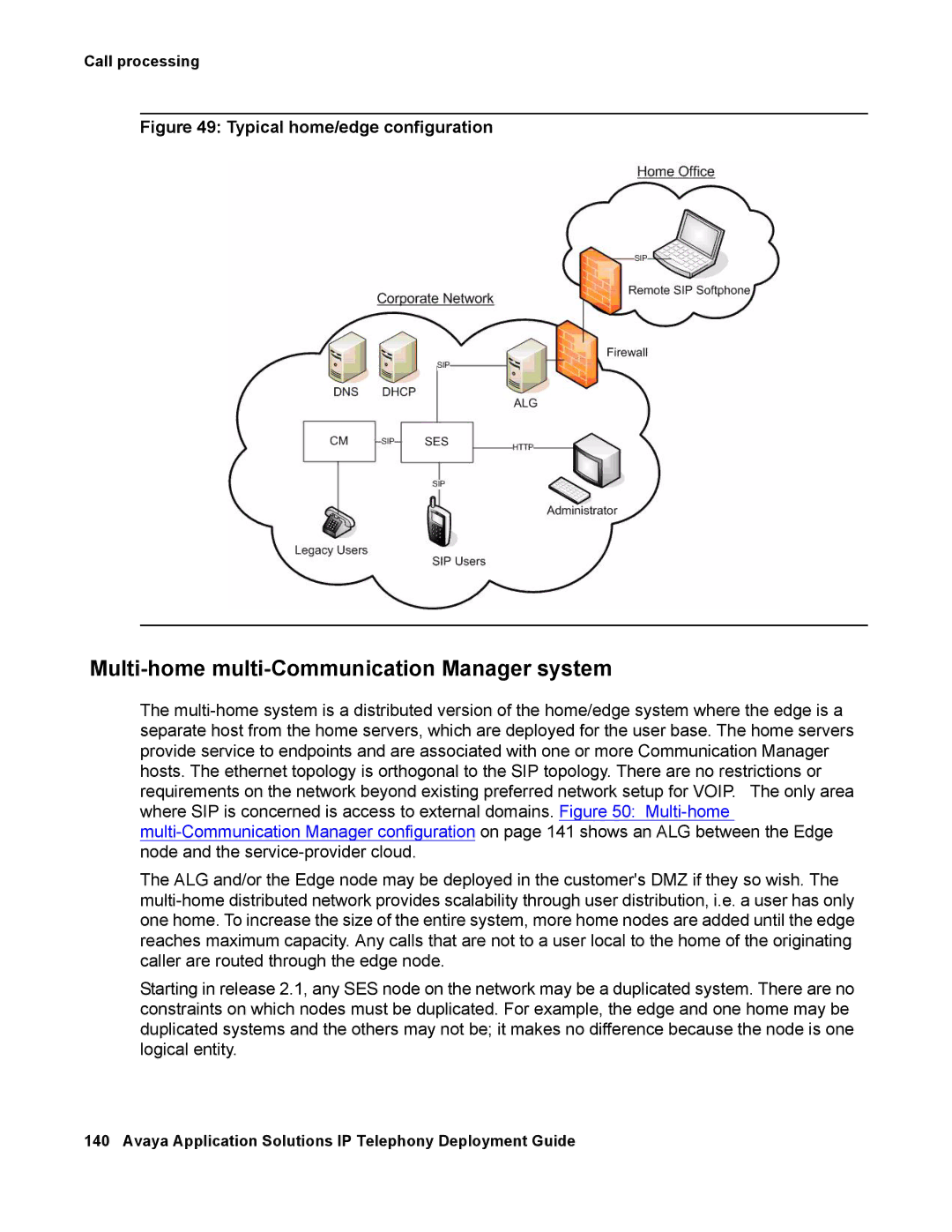
Call processing
Figure 49: Typical home/edge configuration
Multi-home multi-Communication Manager system
The
The ALG and/or the Edge node may be deployed in the customer's DMZ if they so wish. The
Starting in release 2.1, any SES node on the network may be a duplicated system. There are no constraints on which nodes must be duplicated. For example, the edge and one home may be duplicated systems and the others may not be; it makes no difference because the node is one logical entity.
